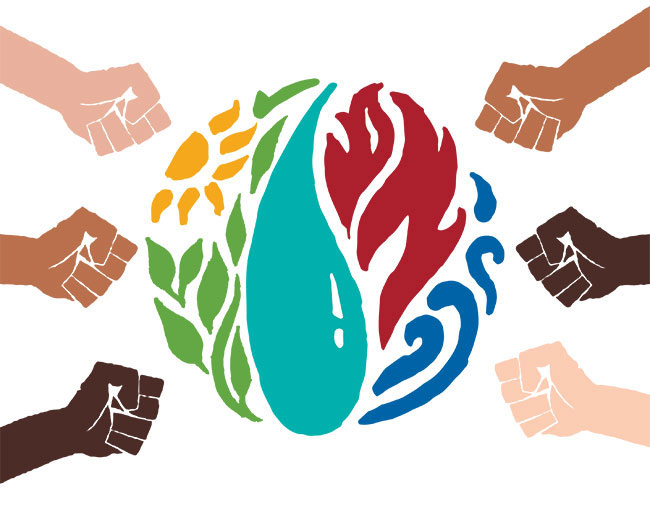
Climate Justice is the protection of the rights of certain groups, like children, older adults, low-wealth communities, and communities of color, that are less climate-resilient or face higher climate risks and therefore are more vulnerable to negative health effects of climate change. (T. Brooks. Climate Change Justice. PS: Political Science & Politics. 2013;46:9-12)
Health Equity is the notion that everyone has a fair and just opportunity to be as healthy as possible. This requires removing obstacles to health such as poverty, discrimination, and their consequences, including powerlessness and lack of access to good jobs with fair pay, quality education and housing, safe environments, and health care. (Source: What Is Health Equity?)
Diversity is the psychological, physical, and social differences that occur among any and all individuals; including but not limited to race, ethnicity, nationality, religion, socioeconomic status, education, marital status, language, age, gender, sexual orientation, mental or physical ability and learning styles. A diverse group, community, or organization is one in which a variety of social and cultural characteristics exist. (Source: Diversity, Equity and Inclusion)
Inclusion is the act of creating environments in which any individual or group can be and feel welcomed, respected, supported, and valued to fully participate and bring their full, authentic selves to work. An inclusive and welcoming climate embraces differences and offers respect in the thoughts, perspectives and actions of all people. (Source: Diversity and Inclusion Definitions)
Racism and Health
Racism structures opportunity and assigns value based on how a person looks. The result: conditions that unfairly advantage some and unfairly disadvantage others. Inequities in social determinants of health (like housing, education and employment) have prevented some people the opportunity to attain their highest level of health. These factors and others have contributed to higher rates of some medical conditions that increase one’s risk of severe illness from diseases such as COVID-19 (Source: Health Equity Considerations and Racial and Ethnic Minority Groups).
Racism results in some people’s increased exposure to health-related risk factors, unhealthy stress levels, and feelings of powerlessness that greatly impact the quality of their physical and mental health (Source: Racism and Health). Structural racism has pushed lower-income communities and many people of color to areas that have fewer resources and more climate vulnerability, such as flood zones and urban heat islands. Race is the number one indicator for the placement of toxic facilities in this country (Source: Environmental and Climate Justice). A recent study published by Harvard University determined that small increase in long-term exposure to PM2.5 leads to a large increase in the COVID-19 death rate. Because climate change worsens air quality, these communities are more vulnerable to the health effects of climate change and puts them at increased risk for diseases such as COVID-19. To achieve health equity and create the Healthiest Nation in One Generation, we must address injustices caused by racism. We must support actions at all levels to ensure equal opportunity for all.